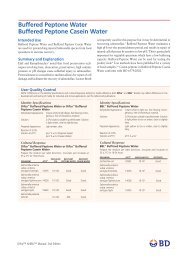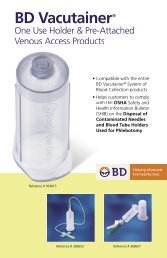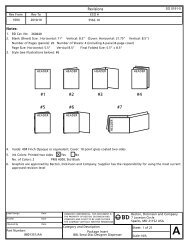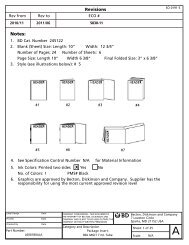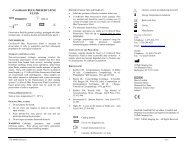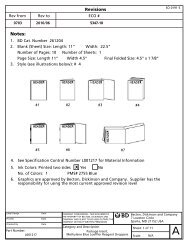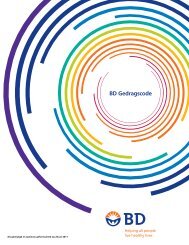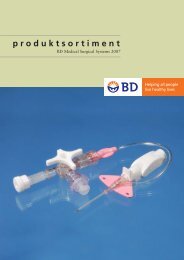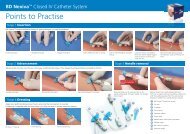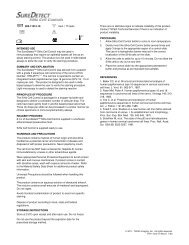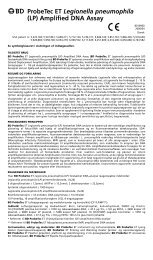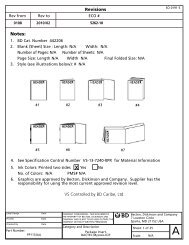Create successful ePaper yourself
Turn your PDF publications into a flip-book with our unique Google optimized e-Paper software.
Correcting for Blood Glucose<br />
That is Out of Range<br />
Know Your Blood Glucose Goals<br />
In this workbook, the American Diabetes<br />
Association (ADA) recommended premeal<br />
blood glucose goals of 90 to 130<br />
mg/dl will be used. If you are above 130<br />
mg/dl, you will increase your insulin;<br />
if you are less than 90 mg/dl you will<br />
decrease the insulin. Many people use<br />
a target of 100 and make adjustments<br />
if they are above or below this target.<br />
‘Correcting’ – The term used for an<br />
immediate change in your insulin dose<br />
based on one event, such as a:<br />
• Single out-of-target blood glucose<br />
level.<br />
• Change in a single meal (you are<br />
invited out to a French restaurant<br />
for dinner).<br />
• Change in your exercise routine<br />
(you are going for a bike ride).<br />
Correcting means you make a minor<br />
change in your insulin dose based on the<br />
event now, but go back to your usual<br />
insulin dose tomorrow.<br />
EXAMPLE:<br />
If you wake up and your blood glucose<br />
reading is 200 mg/dl but you want it to<br />
be 100 mg/dl, you would make an<br />
immediate insulin “correction.” To do<br />
this you would take a certain dose of<br />
short or rapid-acting insulin to bring that<br />
blood glucose value down to 100 mg/dl.<br />
NOTE:<br />
Correction doses of insulin are calculated<br />
for each person and may change<br />
throughout the day. People usually<br />
need a bigger correction dose at<br />
breakfast than at lunch and dinner.<br />
Methods of Correction – There are<br />
many ways to correct for an abnormal<br />
blood glucose value. The three most<br />
common methods will be discussed here.<br />
Check with your health care professional<br />
to see which method is best for you.<br />
Correction Method I – Fixed <strong>Insulin</strong><br />
Dose Based on Blood Glucose Value.<br />
Uses an algorithm (formula) to tell you the<br />
amount of insulin to take based on your<br />
blood glucose levels before meals and at<br />
bedtime. The carb you eat at each meal<br />
should be the same from day to day.<br />
EXAMPLE:<br />
Ken’s Diabetes Team gives him an<br />
algorithm of blood glucose values and<br />
insulin doses. Ken will give the insulin<br />
dose that corresponds to his current<br />
blood glucose.<br />
17




